ABOUT
The objective of the following project, developed at the 2022 Digital Tools for Collaboration Workflows seminar, is to present a collaborative workflow used by student groups and evaluate them, in the search of effective collaboration and successful data sharing and interoperability between project partners. The project has therefore a particular focus on this digital collaboration across design groups, software platforms, different time zones and file formats.
OBJECTIVE
The collaborative workflow seminar runs in close conjunction with the studio where the students had to design a space station on different sites. Groups of students either focused on Moon base as their site or the Orbit space and divided themselves into two larger teams called Lunar and Orbit. This particular project focuses on the collaboration story of Infrastructure group of the Orbit team members amongst themselves and with other Orbit groups.
COLLABORATION STORY
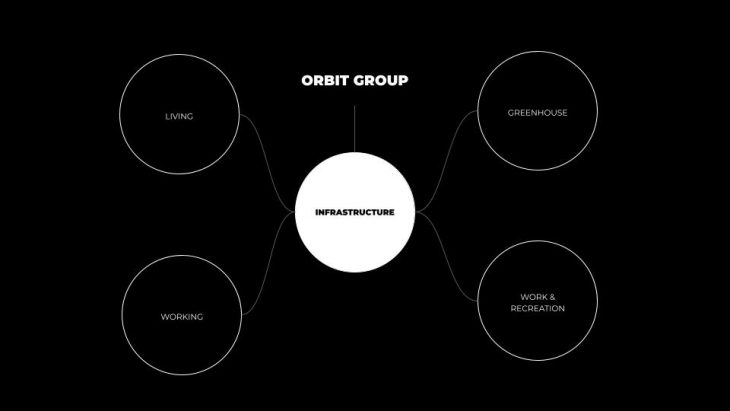
The main responsibility of the Infrastructure group within the Orbital team was to coordinate with the other orbital groups like Living, Work, Recreation and Greenhouse.
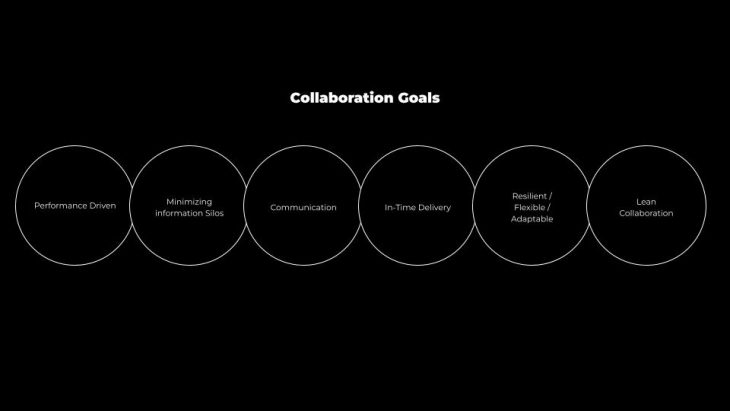
The Infrastructure group aimed at developing a collaboration system which was performance driven, focused on minimizing information silos. Communication was a key aspect for collaboration and the system allowed to create work loops that were resilient, flexible and adaptable to change in consensus. All these aspects allowed for a lean collaboration allowing to maintain a healthy work-life balance.
DESIRED WORKFLOW
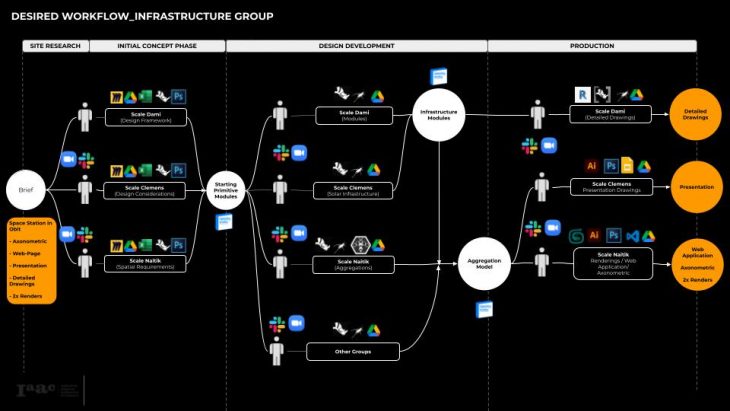
The infrastructure group wanted to follow a desired workflow of equally dividing the work amongst its three members at different phases of the project for the final deliverable. A brief stating the various groups roles and program details in the beginning and for the final deliverable had to be Axonometric of the whole space station, webpage, BIM models & drawings and renders.
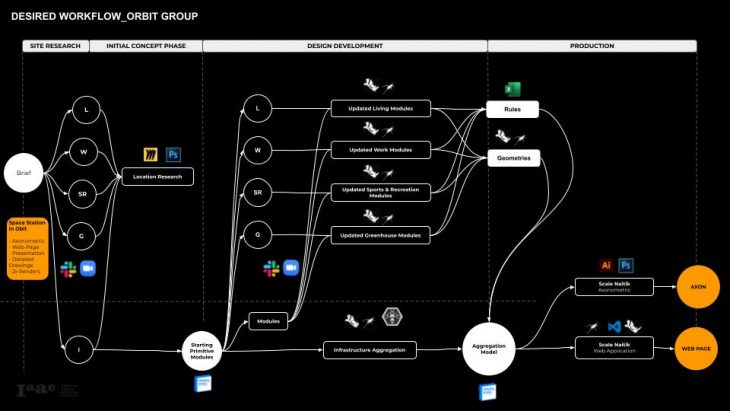
On the larger scope all of the orbit groups came together to research and produce information for selecting a site for the orbit team. All the groups within the orbit team followed a module based approach where every group will produce primitive geometries that would inhabit their program in space and then it was infrastructure’s job to connect the modules of all the other groups. Infrastructure group focused on developing a computational approach that allowed them to explore aggregation models for the Orbit team. And in the end Infrastructure group had the responsibility of delivering Axonometric and a webpage for the entire Orbit Group.
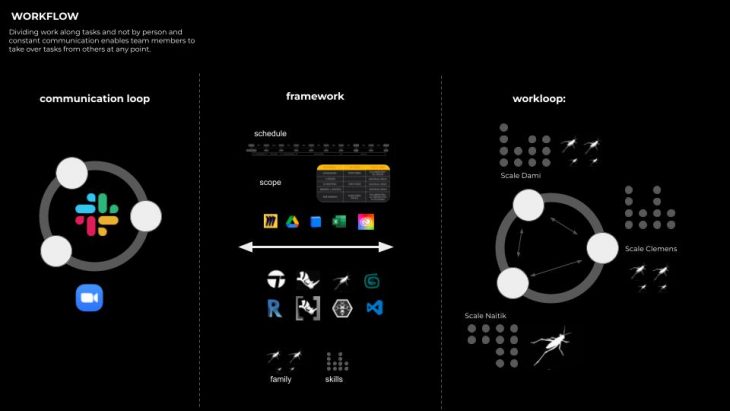
In the beginning the work were very much person driven and skill driven by its members. But in reality the framework the group members agreed to allowed them to take up the task of the other member when required.
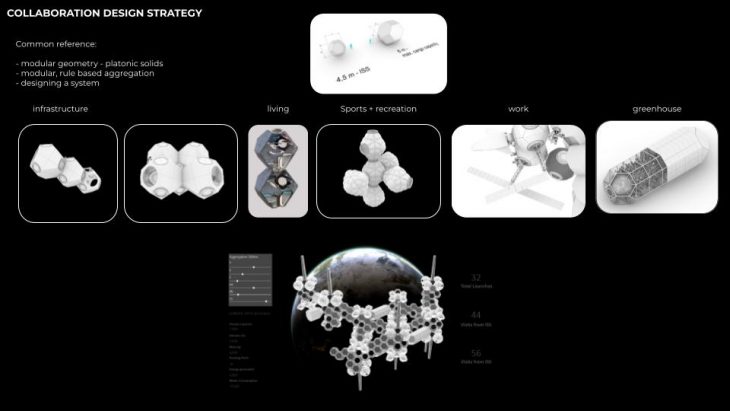
As the collaboration design strategy all the orbital groups agreed to use platonic solids as their modular geometry and it ended up allowing to use rule based aggregation and design a system to be able to contribute to the whole system while also doing individual works.
ACTUAL WORKFLOW
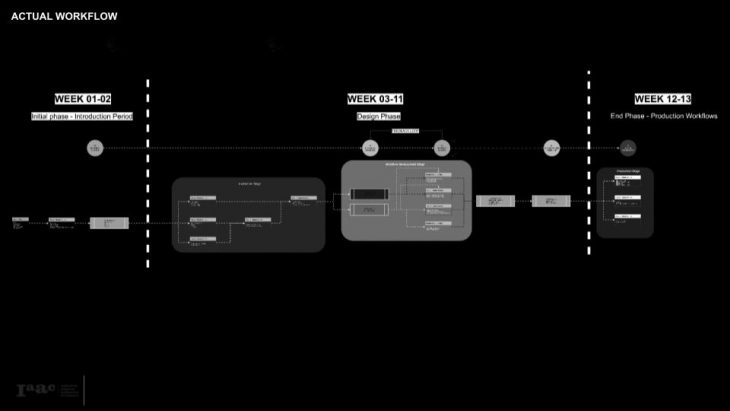
During the actual workflow the initial two weeks were the introduction period to the brief and the space program, the next phase was the design and development phase. And the end period was the production phase where we were asked to deliver the production workflow.
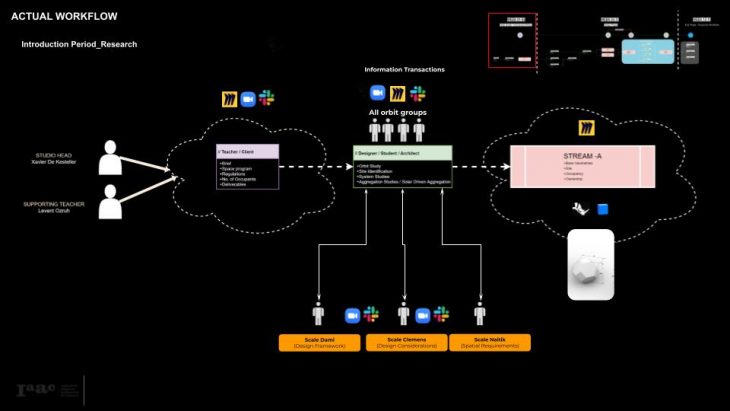
The introduction phase can also be called as exploration period. Where the group were trying out different platonic solids that can cater to the aspect of modularity. During the introduction period the groups received the brief, program structure and all these were communicated through zoom lectures, slack and Miro boards. All the Orbit groups collaborated to decide for a site in the orbit space and collaborated using zoom calls, slack and miro-boards for communication. The infrastructure group did initial research on geometries an space station requirements within themselves. All the three members of the group looked at different aspects for their research and produced Stream-A which was also contributed by the groups as well.
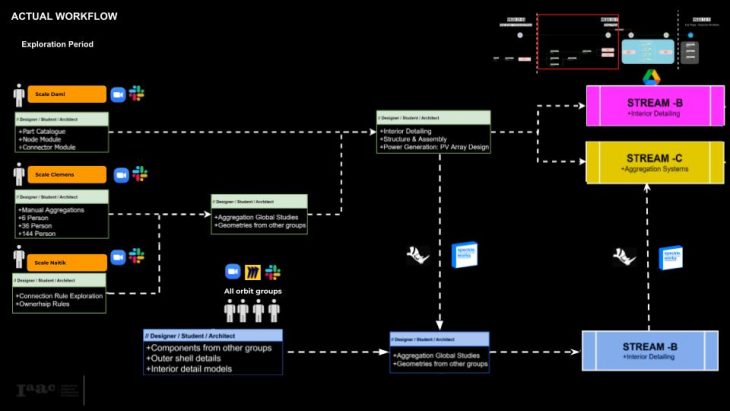
After creating the first stream of information the groups members switched tasks from previous looked into different aspects for the project like Aggregation studies, Ownership Rules, Connection Rules, Computation methods for aggregation, Solar-driven aggregation, Power generation for the PV array system, structure and assembly. All this data was communicated using Google Drive and slack. There was also a separate stream by other groups which communicated their geometric data and allowed the information group to conduct global aggregation studies through Speckle. This allowed the creation of new separate streams with other groups. By the end of this period infrastructure group established two separate streams B and C for Interior Modelling and Aggregation Systems. The Stream-C also feed in from the other stream with the other infrastructure groups.
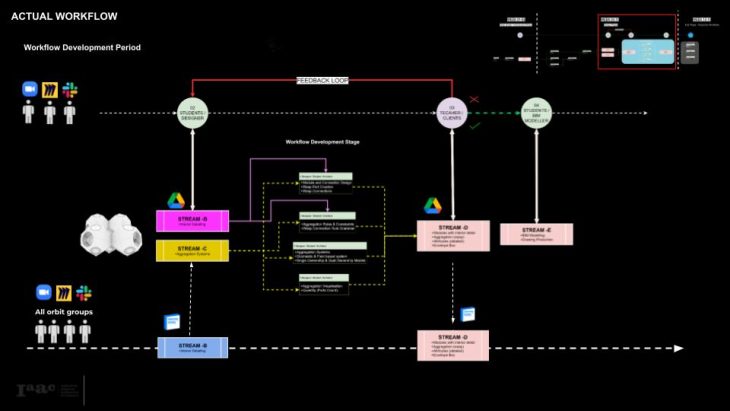
The next stage was a Development period where the group actually developed a streamlined workflow which always stayed true to the system and it does not matter if the tasks is being taken up by the other member of the group. A feedback was also established within the system which allowed the group to iterate over the same tasks and explore different design options. This workflow was mainly composed of Computational aggregation model using wasp plugin for Grasshopper that allowed for testing different geometries. Once the design was given a green signal this allowed for creation of Stream-D and Stream-E. In stream-E the final model was taken from stream-D and feed into it to produce BIM models that allowed to complete one set of deliverables of the group which were drawings and BIM models.
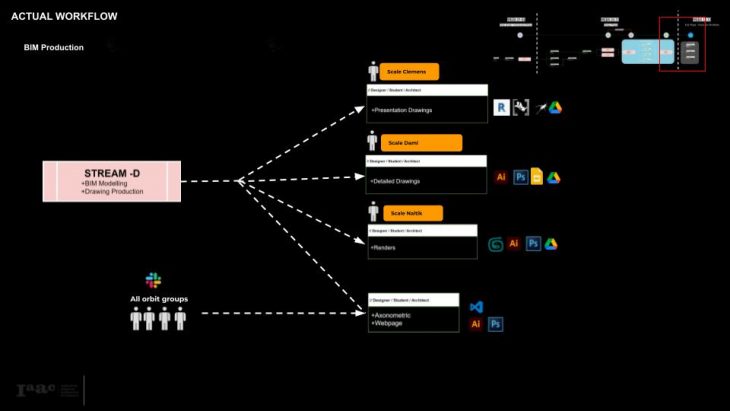
For producing the BIM models the grasshopper geometries were pushed to Revit using Rhino. Inside Revit. The axonometric and webpage has information coming in from other Orbit groups as well as this deliverable was a collaboration with the other groups. And for renders and presentation we used Photoshop, Illustrator, to produce the final outcome.
Orbit Infrastructure – Collaborative Workflow is a project of IAAC, Institute for Advanced Architecture of Catalonia developed at MaCAD (Masters in Advanced Computation for Architecture & Design) in 2021/22 by students: Clemens Russ, Naitik Sharma, Oluwadamilola Akinniyi and faculty: Alann Rynne and Joao Silva